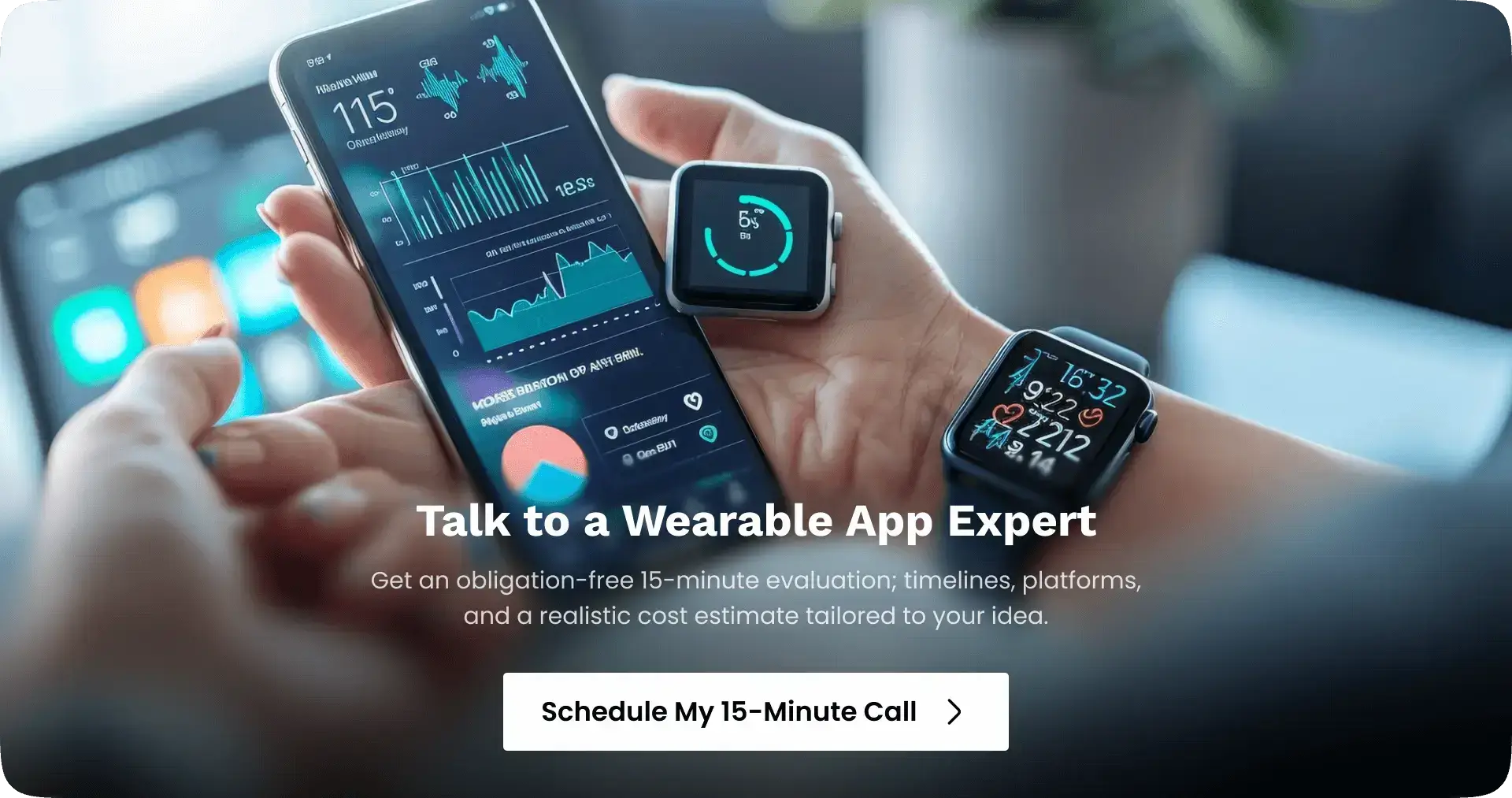Wearable App Development: Benefits, Applications & Development Process

By Shravan Rajpurohit
October 18, 2025
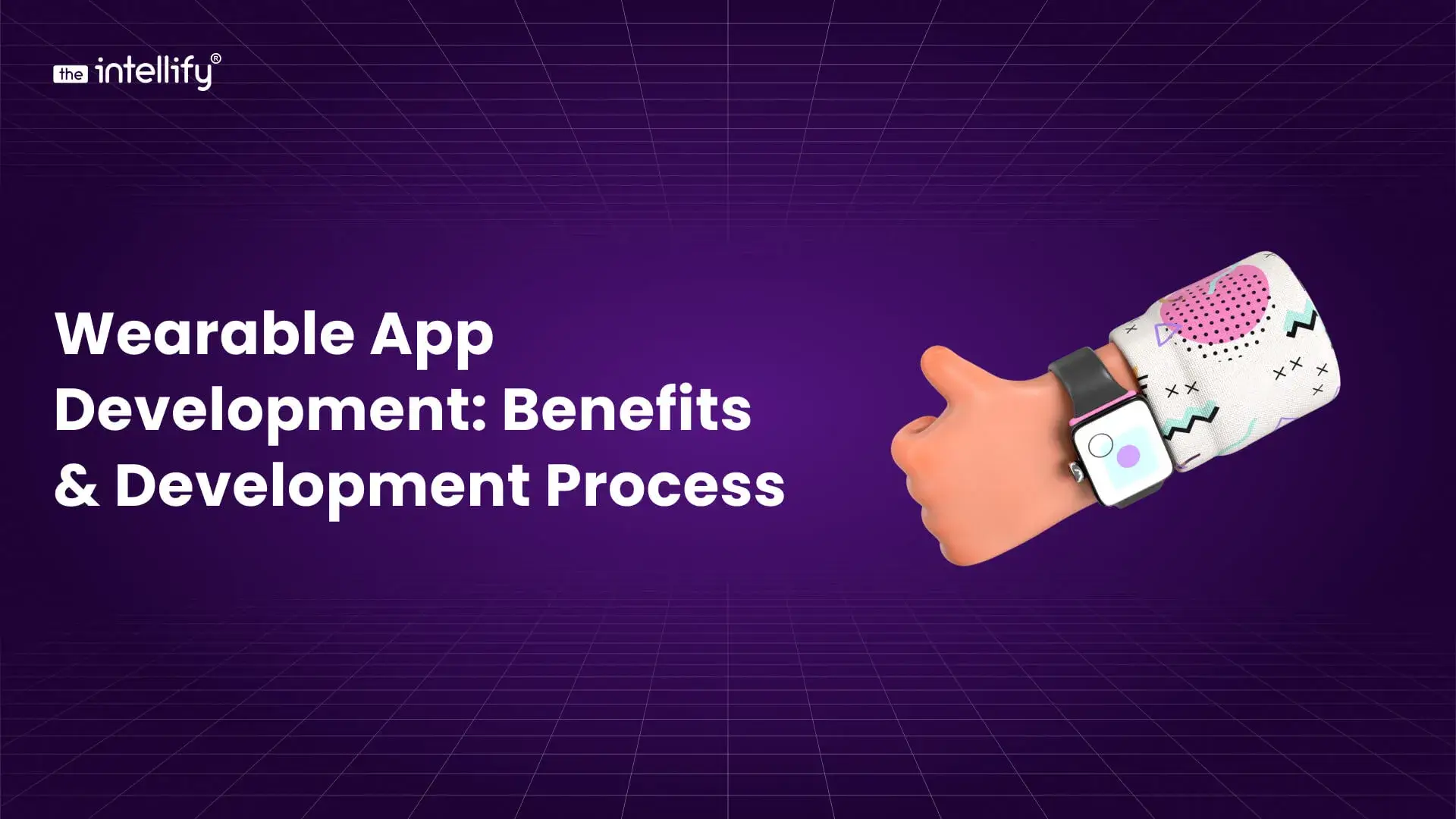
Summary
Wearable app development builds lightweight, sensor-driven applications for devices like Apple Watch, Wear OS, Fitbit, and Garmin, enabling real-time health, fitness, enterprise, and IoT experiences. This guide covers the benefits of wearable apps, top industry applications (healthcare, fitness, retail, logistics), core features, step-by-step development process, cost drivers, common challenges, and future trends such as edge computing and AI on-device. Use it to plan a compliant, user-centric wearable app targeting US and European markets with clear ROI and technical feasibility.
Wearable technology has transformed from basic pedometers and Bluetooth headsets into a multi‑billion‑dollar ecosystem comprising smartwatches, fitness bands, smart glasses, medical sensors, and even connected clothing. Consumers in the United States and Europe have embraced wearables for convenience, health monitoring, and immersive experiences, while businesses are investing to improve productivity and deliver personalized services. Analysts estimate that the global wearable technology market was worth USD 78.40 billion in 2024, and it is expected to more than double to USD 191.58 billion by 2032 with a 12 % compound annual growth rate (CAGR). The market has also seen over 534.6 million wearable devices shipped in 2024. This explosive growth presents a unique opportunity for enterprises and developers to create apps that leverage sensors, AI, IoT, and connectivity to deliver real‑time value.
This article provides a comprehensive guide to wearable app development for US and European audiences. It covers market trends, benefits, industry applications, essential features, development process, cost considerations, challenges, and future trends. It synthesizes insights from leading development firms and credible research to help entrepreneurs, product managers, and CTOs decide how and why to invest in this exciting field.
Market Overview: Adoption and Growth
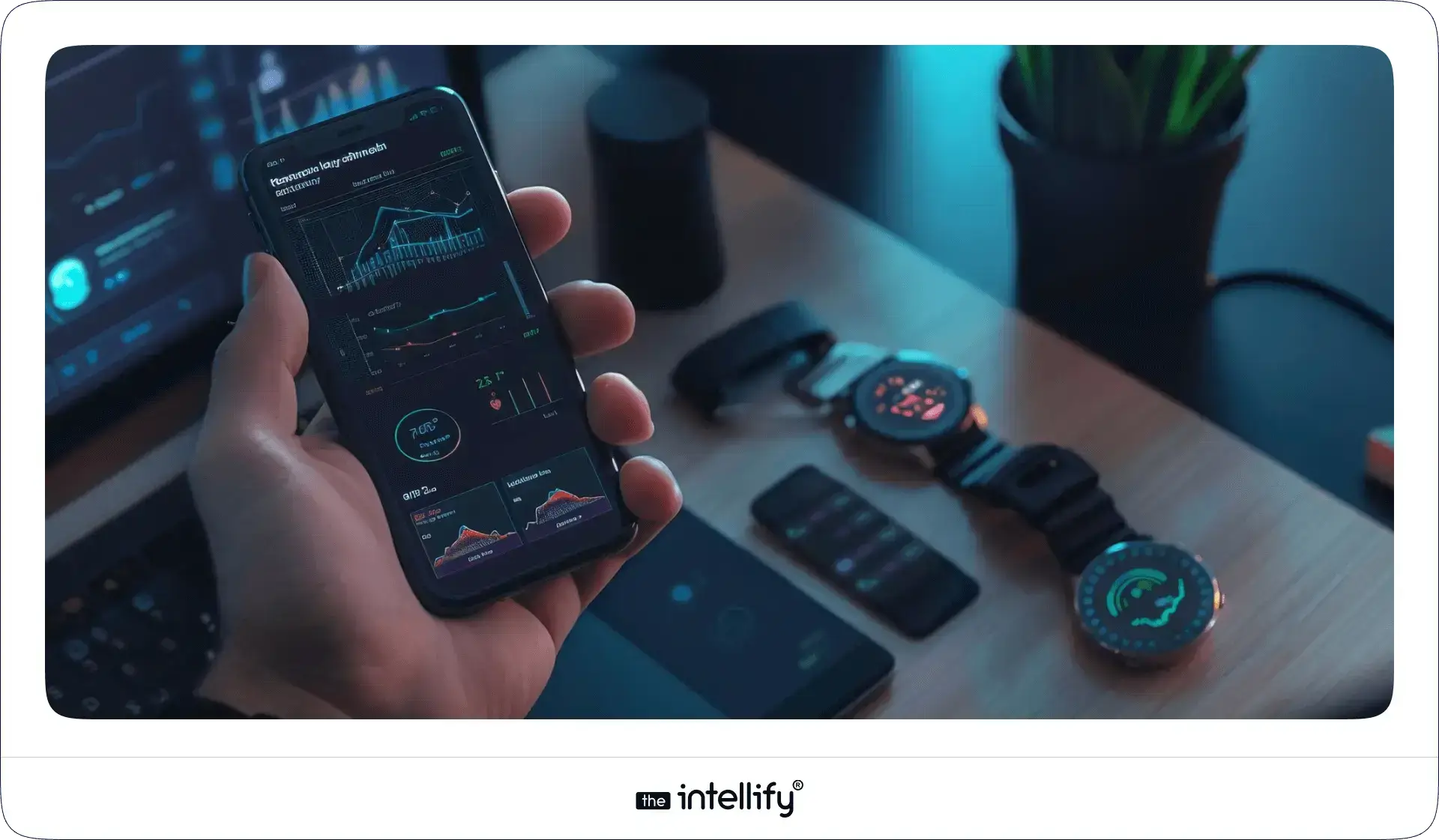
Rising consumer adoption
Wearables are no longer niche gadgets. More than 1 billion connected wearable devices were active worldwide in 2023, and this number continues to rise. An IDC report notes that the global wearables market shipped 534.6 million units in 2024, representing 5.4 % year‑over‑year growth despite saturation in mature smartwatch markets. Hearables (earbuds and smart headphones) were the largest category, while smartwatches saw a temporary decline before expected recovery. This penetration is driven by improvements in design, decreasing component costs, and the integration of advanced sensors like heart‑rate monitors, electrocardiogram (ECG) sensors, a nd blood‑oxygen (SpO₂) sensors.
Market value and regional trends
According to Fortune Business Insights, the wearable technology market will grow from USD 86.78 billion in 2025 to USD 191.58 billion by 2032, with a CAGR of 12 %. North America currently holds about 39 % of the market, while Europe is rapidly adopting wearables in health, fitness, and industrial applications. The COVID‑19 pandemic accelerated health and wellness wearables; more than 400 million health and wellness wearables were shipped in 2024, reflecting demand for continuous monitoring and early detection.
Key drivers of growth
- Health and wellness monitoring: Consumers want to track heart rate, sleep, oxygen saturation, and stress levels. Examples include Apple Watch’s ECG feature that detects irregular heart rhythms and encourages users to seek medical attention
- Contactless payments: Smartwatches and fitness bands support Apple Pay, Google Pay, and other payment apps, making transactions quick and hygienic.
- Workplace productivity and safety: Enterprises deploy AR smart glasses and wearable sensors to guide tasks, monitor worker health, and improve safety. Boeing uses AR glasses for aircraft assembly, enhancing accuracy and reducing errors.
- Generative AI and advanced analytics: Wearable apps increasingly use AI to derive personalized health insights, generate recommendations, and detect anomalies. Generative AI can analyze complex datasets and produce tailored wellness scores or predictive health alerts.
- Integration with 5G and IoT: Fast, low‑latency connectivity enables wearables to stream data continuously and interact with connected devices, powering remote patient monitoring and immersive experiences.
Benefits of Wearable App Development
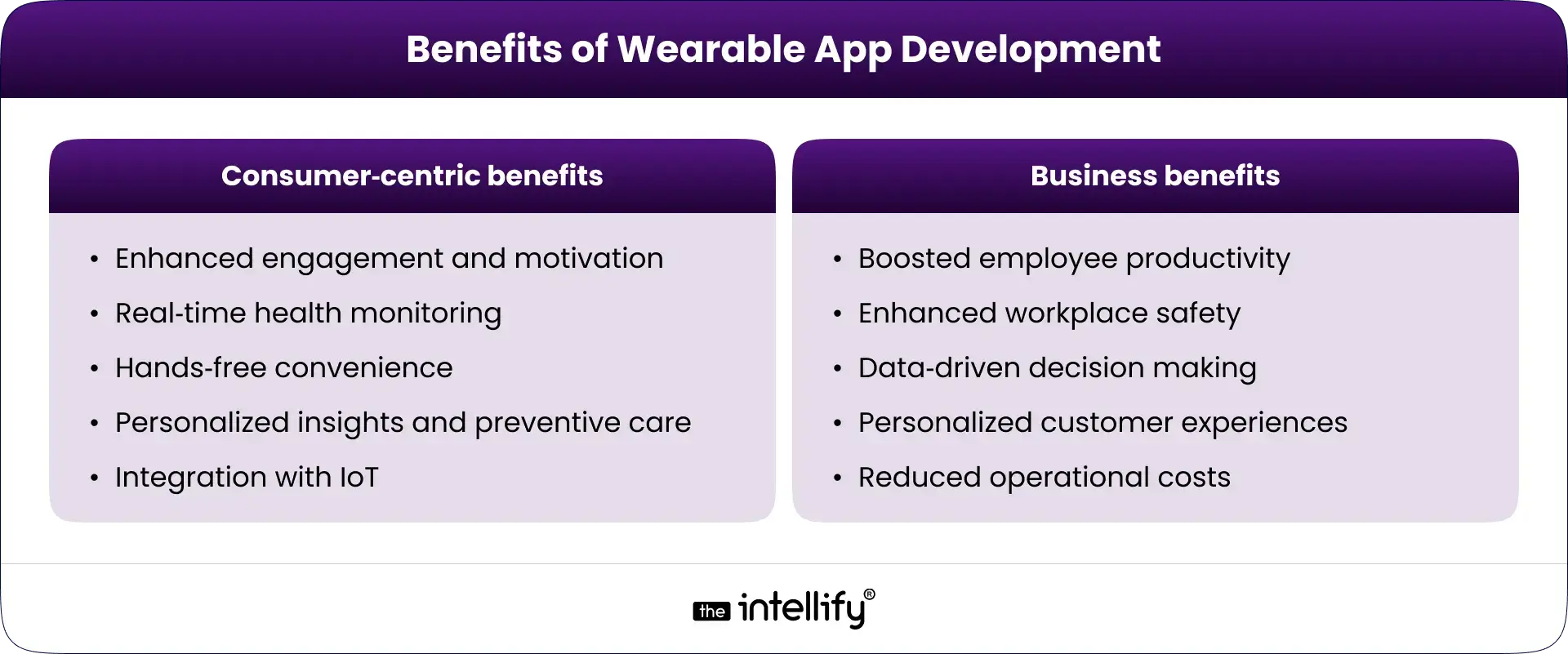
Wearable apps offer a range of benefits to consumers and businesses alike. They enhance user engagement, enable real‑time health monitoring, improve convenience, and create new revenue opportunities. Below are the primary benefits.
Consumer‑Centric Benefits
- Enhanced engagement and motivation: Wearable apps provide personalized notifications and gamification features that encourage users to stay active. For example, Apple’s Activity Rings and Strava’s performance badges motivate users to complete daily goals, turning physical activity into an engaging challenge.
- Real‑time health monitoring: Advanced sensors measure heart rate, SpO₂, ECG, sleep patterns, and stress levels. Wearables like Dexcom G7 continuously monitor glucose levels and alert users to critical readings, improving chronic disease management.
- Hands‑free convenience: Smartwatches offer voice assistants, gesture recognition, a nd haptic feedback, allowing users to check messages, control music, or get directions without pulling out their phone. This is especially beneficial during workouts or driving.
- Personalized insights and preventive care: Wearables leverage AI and machine learning to analyze biometric data and generate customized health recommendations. Predictive analytics can detect irregular patterns and warn users about potential conditions.
- Integration with IoT: Wearables connect seamlessly with smart home devices, CA, and healthcare systems. For instance, a smartwatch can unlock smart locks, control thermostats, or share health data with doctors for remote monitoring.
Business Benefits
- Boosted employee productivity: Wearable apps streamline workflows by providing employees with hands‑free access to instructions, schedules, nd notifications. Employees can check tasks and communicate without stopping their work, which is particularly useful in logistics, manufacturing, and field services.
- Enhanced workplace safety: Wearable sensors monitor worker vitals, detect falls or hazardous environmental conditions, and send real‑time alerts to supervisors.
- Data‑driven decision making: Integrating AI into wearable apps allows companies to analyze aggregated data for insights into workforce productivity, customer behavior, or product usage. This fosters evidence‑based decisions and product improvements.
- Personalized customer experiences: Retailers use wearable apps to push personalized promotions and loyalty rewards directly to customers’ wrists. Location‑based notifications drive foot traffic and enhance brand engagement.
- Reduced operational costs: Wearable technology reduces workplace accidents and improves efficiency, lowering costs associated with downtime, insurance claims, and manual processes.
- Competitive differentiation: Early adopters of wearable solutions position themselves as innovators and attract tech‑savvy customers and employees.
Essential Features of Wearable Apps
To deliver value while ensuring usability, wearable apps must combine simplicity with intelligence. The following features are particularly important.
1. Simplified user interface and notifications
Wearables have small screens, so interfaces must be uncluttered with clear typography and intuitive gestures. Key information should be accessible in one or two taps, and notifications should be concise to avoid overwhelming users. Personalization settings allow users to customize notification frequency and type.
2. Voice and gesture controls
Voice assistants such as Siri, Google Assistant, and Alexa enable hands‑free interactions, while gesture recognition allows users to perform actions like answering calls or changing music by tapping or waving. These controls enhance accessibility and safety, especially when users are exercising or driving.
3. Real‑time data synchronization
Wearable apps should sync data seamlessly with companion smartphone apps or cloud services. This ensures that users can view detailed reports, share information with doctors, and maintain data continuity even when the wearable is offline. Bluetooth Low Energy (BLE), Wi‑Fi, and 5G enable efficient data transfer.
4. Sensor integration and health monitoring
The ability to access sensors such as accelerometers, gyroscopes, heart‑rate monitors, SpO₂ sensors, ECG, GPS, and temperature sensors is critical. Apps should interpret sensor data accurately and translate it into actionable insights like heart‑rate zones, stress scores, or recovery suggestions.
5. Personalization and AI‑powered insights
Machine learning algorithms analyze user behavior and physiological patterns to create personalized goals, workout plans, and dietary recommendations. Generative AI can provide daily wellness scores and predictive health alerts, making wearables smarter companions.
6. Battery and resource optimization
Wearable devices have limited battery capacity. Apps must optimize resource usage through efficient code, dark theme, and on‑device processing to minimize energy consumption. Background updates should be timed to reduce wake events.
7. Security and privacy protection
Sensitive health data requires strong encryption, secure authentication, and compliance with regulations such as HIPAA and GDPR. Developers should provide granular consent settings and transparent privacy policies. Integration with Apple HealthKit, Google Fit, and other platforms must adhere to data‑handling guidelines.
8. Offline functionality and durability
Wearables may lose connectivity during workouts or travel. Offline capabilities ensure that core features like step counting, heart‑rate monitoring, and reminders continue to function. Ruggedness features such as water and sweat resistance, reinforced casing, and scratch‑resistant screens make wearables suitable for outdoor and industrial use.
Applications of Wearable Apps Across Industries
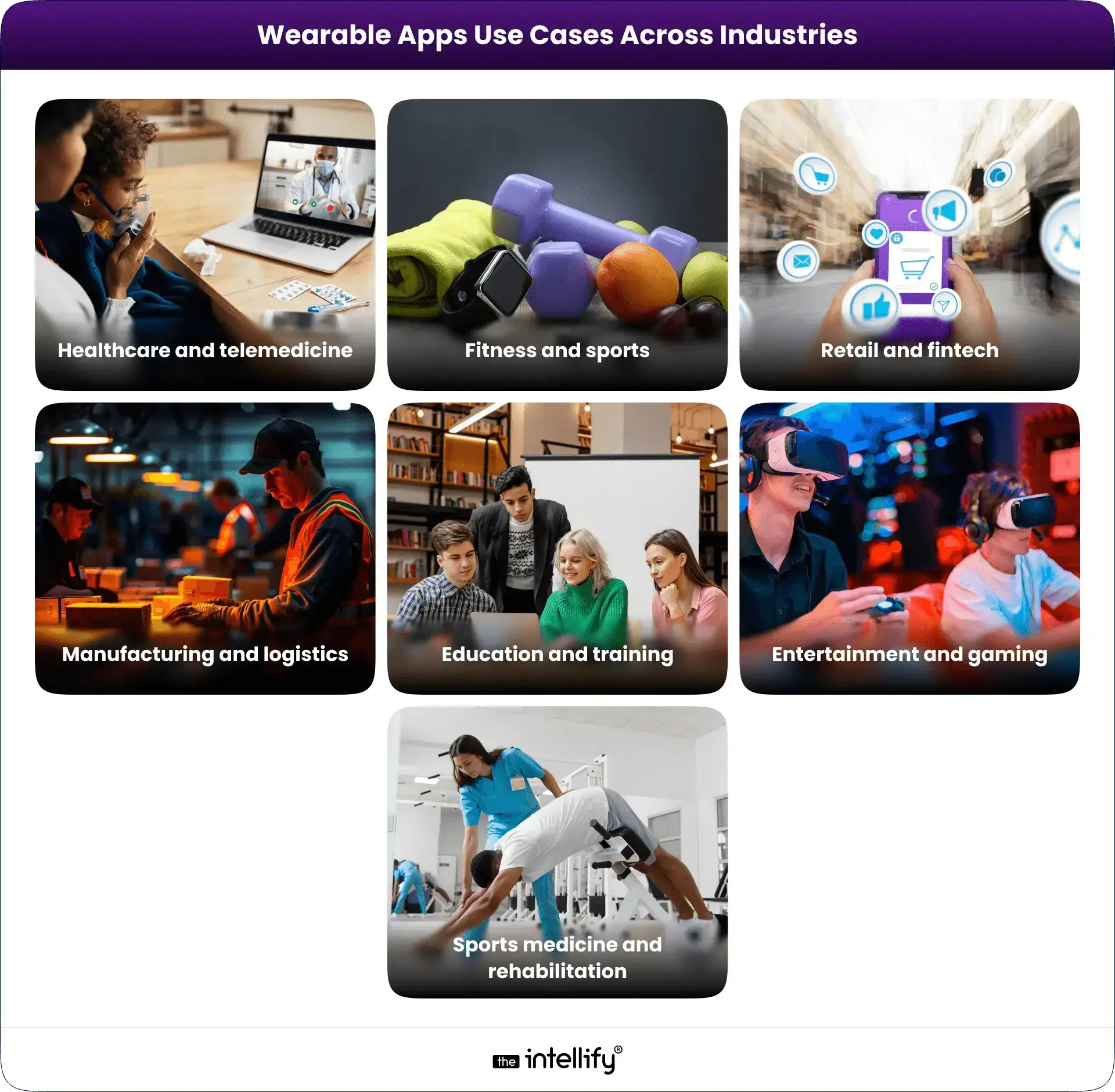
The versatility of wearables means applications span several industries. Below are key sectors where wearable apps are making a significant impact.
Healthcare and telemedicine
Healthcare is arguably the most transformative sector for wearables. Devices like smartwatches, fitness bands, and medical sensors provide continuous monitoring of heart rate, blood oxygen, blood glucose, and respiratory parameters. Wearable apps can detect arrhythmias, alert users to abnormal readings, and share data with physicians in real time. For example, the Apple Watch’s ECG feature can detect atrial fibrillation and prompt users to seek medical help, while Dexcom G7 uses sensors to monitor glucose levels and transmit readings to smartphones for diabetes management. Remote patient monitoring reduces hospital visits and enables early intervention, improving outcomes and reducing healthcare costs.
Fitness and sports
Fitness apps on wearables help users track steps, calories, heart rate variability, and sleep quality. Apps like Strava, Nike RunClub, and Fitbit provide real‑time feedback, personalized training plans, and social features to encourage competition and accountability. Athletes wear wearables to monitor VO₂ max, lactate threshold, cadence, and recovery metrics, helping optimize training and prevent injuries. Coaches can analyze aggregated data to tailor workouts and identify areas for improvement.
Retail and fintech
Retailers use wearables to deliver hyper‑personalized experiences. Smartwatches and smart glasses can send targeted promotions, enable contactless payments, and support loyalty programs. Amazon employs AR‑enabled smart glasses and wearable scanners in warehouses to guide order picking and improve inventory management. In fintech, wearable payment apps like Apple Pay and Google Pay provide secure transactions that free consumers from carrying wallets.
Manufacturing and logistics
In factories and warehouses, wearables improve worker safety and productivity. AR smart glasses display hands‑free instructions, checklists, and maintenance manuals, reducing errors and training time. For example, Boeing uses AR glasses to guide technicians through complex aircraft assembly, resulting in higher accuracy. Wearable bands track worker location, detect hazardous conditions, and monitor vital signs to prevent accidents.
Education and training
AR and VR headsets enable immersive learning experiences that make complex topics tangible. Microsoft’s HoloLens allows medical students to explore 3D anatomy models and chemistry experiments. Wearable devices support interactive classroom quizzes, attention tracking, and remote collaboration, making education more engaging and effective.
Entertainment and gaming
Wearables create new forms of entertainment by blending physical and virtual worlds. VR headsets like HTC Vive and Oculus Quest immerse players in 3D environments, while motion trackers and haptic feedback devices provide realistic interactions. Gesture‑controlled wearables let gamers interact with content using natural movements, opening the door to new genres of games and fitness‑based experiences.
Sports medicine and rehabilitation
Wearable sensors monitor athletes’ biomechanics and recovery to prevent injuries and accelerate rehabilitation. Apps provide personalized recovery plans and track progress during physical therapy, enabling therapists to adjust treatments in real time. For seniors or individuals with mobility issues, wearables detect falls and automatically alert caregivers.
Wearable App Development Process
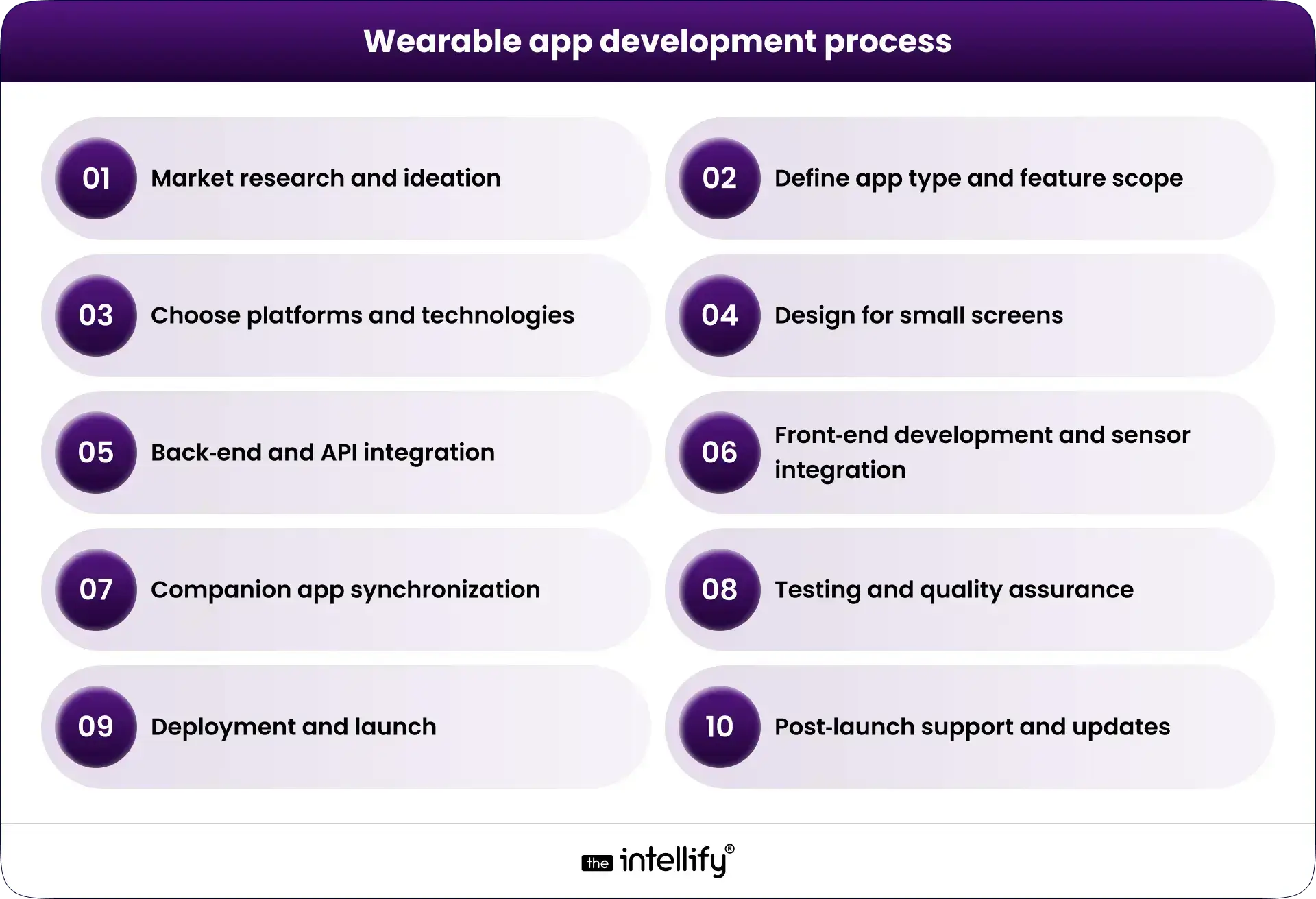
Building a successful wearable app requires a structured approach that considers user needs, platform constrain, and business goals. The following steps summarize best practices drawn from industry guides and expert development firms.
1. Market research and ideation
Start by identifying the target audience and their pain points. Analyze competitors, study market trends, and explore potential opportunities in specific industries. For instance, determine whether the app is aimed at fitness enthusiasts, chronic disease patients, or factory workers. Collect feedback from potential users and stakeholders to validate the idea.
2. Define app type and feature scope
Decide whether your app will be standalone or a companion. Standalone apps run directly on the wearable, performing simple functions like step tracking or music playback. Companion apps rely on a smartphone for heavy processing and data visualization, collecting information on the wearable and syncing it to the mobile app. Outline must‑have features, such as health tracking, notifications, voice commands, or AI‑powered coaching.
3. Choose platforms and technologies
Select the appropriate operating system and development environment based on your target audience. watchOS (Swift/WatchKit) powers Apple Watch, Wear OS (Java/Kotlin) supports Android wearables, Fitbit OS uses JavaScript, and custom solutions may require C++ or embedded languages. Consider whether cross‑platform frameworks like Flutter or React Native can meet your needs. Evaluate connectivity options (BLE, Wi‑Fi, NFC) and sensor APIs.
4. Design for small screens
Designers must craft minimal, glanceable interfaces optimized for tiny screens. Use large, legible fonts and simple navigation patterns such as swipes and taps. Dark themes help save battery life and improve legibility in bright environments. Accessibility features like voice feedback and haptic cues are essential for inclusivity.
5. Back‑end and API integration
Build a robust back‑end architecture to store and process data securely. Implement RESTful APIs or GraphQL to communicate between the wearable, companion app, and cloud servers. Integrate third‑party APIs like Apple HealthKit, Google Fi, and medical device APIs to access sensor data. Ensure scalability to handle growing user bases and real‑time analytics.
6. Front‑end development and sensor integration
Use platform‑specific SDKs to build the app interface and integrate sensors. Optimize code for memory and battery efficiency, since wearables have limited resources. Implement offline storage to buffer data when connectivity is unavailable. For cross‑platform apps, ensure consistent performance across various device models and screen sizes.
7. Companion app synchronization
If your wearable app relies on a smartphone, develop a companion mobile app to display detailed analytics, user profiles, a nd settings. Synchronization should be seamless and secure, with minimal latency and conflict resolution mechanisms.
8. Testing and quality assurance
Testing wearable apps is challenging due to diverse hardware and sensor combinations. Conduct functional, performance, usability, battery, and security testing across multiple devices and operating systems. Test offline scenarios, sensor accuracy, connectivity interruptions, and voice/gesture commands. Use physical devices, simulators, and crowd‑testing platforms to ensure broad coverage. Validate compliance with App Store and Play Store guidelines.
9. Deployment and launch
Prepare marketing materials, screenshots, and descriptions that highlight the app’s value proposition. Ensure compliance with the guidelines of Apple’s App Store, Google Play, or proprietary stores like Fitbit Gallery. After launch, track user feedback, ratings, and crash reports to identify improvement areas.
10. Post‑launch support and updates
Gather user feedback to fix bugs, improve features, and add new capabilities such as generative AI insights or integration with new sensors. Regular updates maintain compatibility with new OS versions and devices. Consider offering premium subscriptions or in‑app purchases for advanced features.
Cost Considerations and Factors
Developing a wearable app can cost from USD 10,0000 to more than USD 150,000, depending on complexity and scope. The following factors influence the budget:
1. App complexity and features: Basic apps (step trackers or simple notifications) may cost $10 000-$20 000. Apps with real‑time health monitoring, GPS tracking, or backend synchronization start at around $25 000 and can reach $50 000. Complex solutions using AI, AR/VR, or voice assistants can exceed $60 000-$150 000.
2. Platform choice: Developing for Apple Watch can be less expensive due to fewer device variations, whereas Wear OS requires testing across multiple manufacturers.
3. Design complexity: Minimalistic UIs are cheaper, while custom animations, advanced gestures, and bespoke graphics increase costs.
4. Device compatibility: Supporting multiple wearable models and sensors increases development and testing time.
5. Backend infrastructure and security: Integrating secure cloud services, databases, and compliance with HIPAA or GDPR adds to development expenses.
6. Developer location: Rates vary globally; North America and Western Europe typically charge more than Eastern Europe or South Asia.
7. Testing and maintenance: Extensive testing for battery optimization and sensor accuracy adds to the cost. Ongoing maintenance, updates, and customer support also require a budget.
To manage costs, companies often start with a minimum viable product (MVP), target a single platform initially, reuse modular components, and outsource to experienced offshore developers.
Future Trends and Opportunities

Wearable technology continues to evolve. Understanding future trends helps developers build products that remain relevant over the coming years.
Generative AI and predictive analytics
As generative AI models become more sophisticated, wearable apps will deliver hyper‑personalized wellness recommendations, generate tailored workout plans, and predict health issues before symptoms arise. AI can synthesize data from multiple sensors, contextualize it with environmental factors, and provide natural language feedback.
Advanced health sensors and diagnostics
Next‑generation wearables will monitor blood pressure, hydration levels, respiration, and even detect biochemical markers through non‑invasive sensors. Continuous glucose monitoring devices like Dexcom G7 are already mainstream, and research is underway on wearable devices that analyze sweat or interstitial fluid for metabolic insights.
Integration with 5G and edge computing
5G provides ultra‑low latency and high bandwidth, enabling real‑time streaming of sensor data and AR/VR experiences. Combined with edge computing, wearables can process data locally to reduce latency and preserve privacy.
Augmented reality (AR) and mixed reality (MR)
AR glasses and mixed reality headsets will move beyond entertainment into enterprise, healthcare, e-learning, and education. Surgeons may use AR overlays for guidance during procedures, while retailers deploy AR to enhance in‑store shopping. The convergence of AR, AI, and IoT creates opportunities for contextual assistance and immersive training.
Sustainable and energy‑harvesting wearables
Researchers are developing energy‑harvesting technologies that use body heat, movement, or ambient light to charge wearables, reducing reliance on batteries. Sustainable materials and biodegradable components are becoming priorities as consumers demand eco‑friendly devices.
Open health ecosystems and interoperability
Interoperability between wearables, electronic health records (EHRs), IoT devices, and cloud services will become essential. Standardized APIs, data formats, and regulatory frameworks will enable seamless data exchange while preserving privacy.
Conclusion
Wearable app development sits at the intersection of hardware innovation, software engineering, and human-centered design. Rapid market growth and consumer adoption in the US and Europe provide fertile ground for entrepreneurs and established companies to create impactful applications. Successful wearable apps deliver real‑time health monitoring, hands‑free convenience, and personalized experiences, while businesses benefit from improved productivity, safety, and customer engagement.
To capitalize on this opportunity, developers must understand the unique constraints of wearable tiny screens, limited battery, and diverse hardware, and design experiences that feel intuitive and valuable. By following a structured development process, prioritizing security and privacy, and embracing emerging technologies like AI and AR, organizations can build wearables that improve lives and open new revenue streams. With the market poised to surpass USD 191 billion by 2032, now is the time to explore wearable app development and shape the future of connected experiences.
Frequently Asked Questions (FAQs)
1. What is wearable app development, and how is it different from mobile app development?
Wearable app development focuses on small-screen, sensor-driven experiences optimized for low power, quick interactions, and continuous data streams (e.g., heart rate, steps), unlike full mobile apps that handle richer UIs, larger storage, and extended sessions. Wearable apps require specialist skills in sensor integration, BLE, real-time streaming, low-power design, and concise UX.
2. How much does wearable app development cost for a smartwatch app?
Wearable app development cost for a smartwatch app typically ranges widely depending on scope: a simple fitness tracker can start in the low five figures, while a HIPAA-compliant healthcare wearable or enterprise IoT solution can be mid to high five or six figures. Cost drivers include platform support (Apple Watch vs. Wear OS vs. Fitbit), sensor & hardware integration, backend telemetry, regulatory compliance, and ongoing maintenance.
3. Which wearable platforms should startups target first: Apple Watch, Wear OS, Fitbit, or Samsung Galaxy Watch?
Targeting depends on user demographics and features: Apple Watch is ideal for premium health and consumer markets in the US, Wear OS and Samsung Galaxy Watch reach broader Android users, and Fitbit/Garmin are strong for dedicated fitness audiences. Many startups start with one platform (highest ROI) and expand cross-platform later.
4. What features are essential in a healthcare wearable app (mHealth) for compliance and accuracy?
Essential features include secure data encryption at rest and in transit, user consent flows, fine-grained access control, validated sensor calibration, time-stamped clinical telemetry, audit logs, and interoperability (FHIR/API). For US/Europe markets, implement HIPAA controls (US) and GDPR-compliant data handling (EU) to ensure regulatory compliance.
5. How long does it take to develop a wearable app from concept to launch?
Typical timelines: an MVP (basic tracking + backend) can take 8-12 weeks; a polished cross-platform app with analytics, integration, and compliance may take 4-6 months. Timelines vary by scope (sensor complexity, certification, clinical validation) and team experience.
6. What factors influence wearable app development cost and ongoing maintenance?
Influencing factors: supported platforms and OS versions, sensor/device integration complexity, compliance (FDA/HIPAA/GDPR), backend scalability and analytics, offline capability, firmware/SDK updates, QA testing matrix (many devices), and post-launch support (security patches, new device support).
7. What are the future trends in wearable technology, and how should developers prepare?
Future trends include on-device AI (ML inferencing), edge computing, tighter smartphone-watch collaboration, medical-grade sensors, AR/VR wearables integration, and improved battery tech. Developers should invest in modular architectures, ML toolchains (TensorFlow Lite, Core ML), robust CI/CD for firmware and apps, and privacy-first data strategies.

Written By, Shravan Rajpurohit
Shravan Rajpurohit is the Co-Founder & CEO of The Intellify, a leading Custom Software Development company that empowers startups, product development teams, and Fortune 500 companies. With over 10 years of experience in marketing, sales, and customer success, Shravan has been driving digital innovation since 2018, leading a team of 50+ creative professionals. His mission is to bridge the gap between business ideas and reality through advanced tech solutions, aiming to make The Intellify a global leader. He focuses on delivering excellence, solving real-world problems, and pushing the limits of digital transformation.
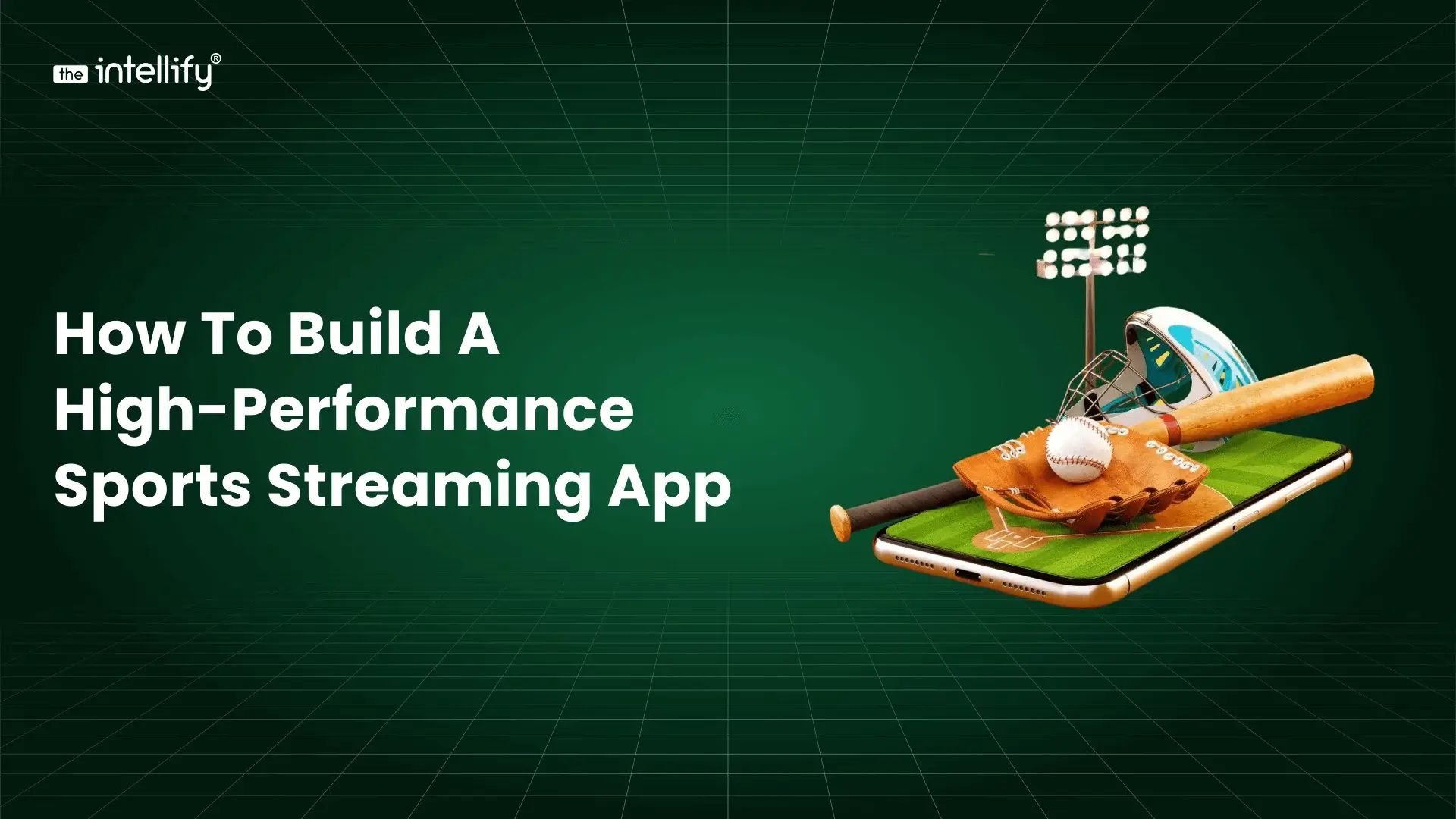

How to Build a High-Performance Sports Streaming App
Summary: This blog provides a clear overview of how to build a sports streaming app, including essential features, advanced capabilities, tech architecture, cost breakdowns, and the full development roadmap. It also covers monetization options, performance challenges, and what makes a streaming experience successful. If you’re exploring sports streaming app development, this guide helps you understand […]
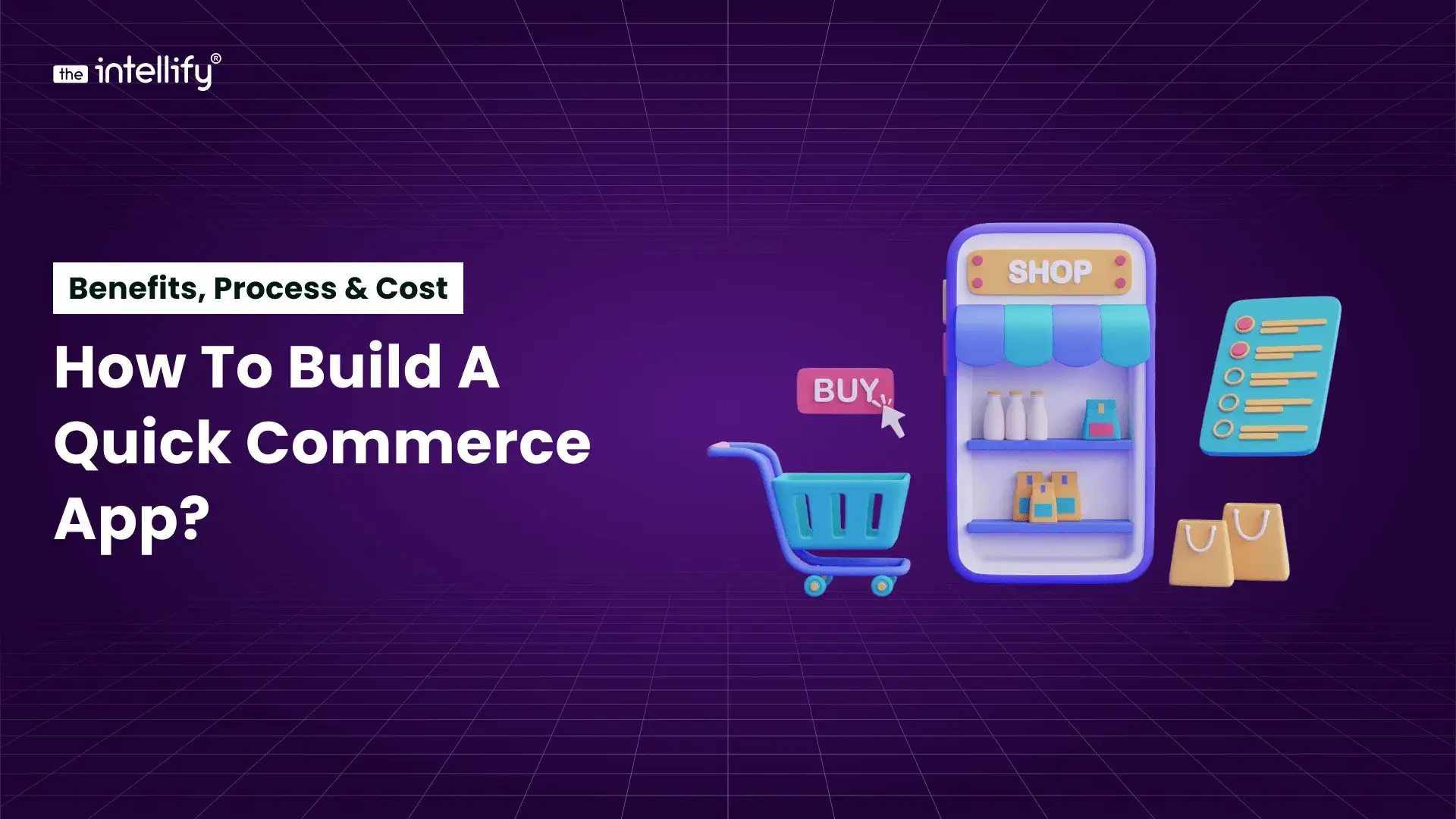

How to Build a Quick Commerce App? Benefits, Process & Cost Guide
Summary: This blog explains how quick commerce works and why it’s becoming the preferred way to deliver essentials within minutes. It covers dark stores, business models, benefits, AI’s role, and a complete step-by-step guide to building a Q-commerce app. You’ll also find cost insights, key challenges, and future trends to help you plan, launch, or […]
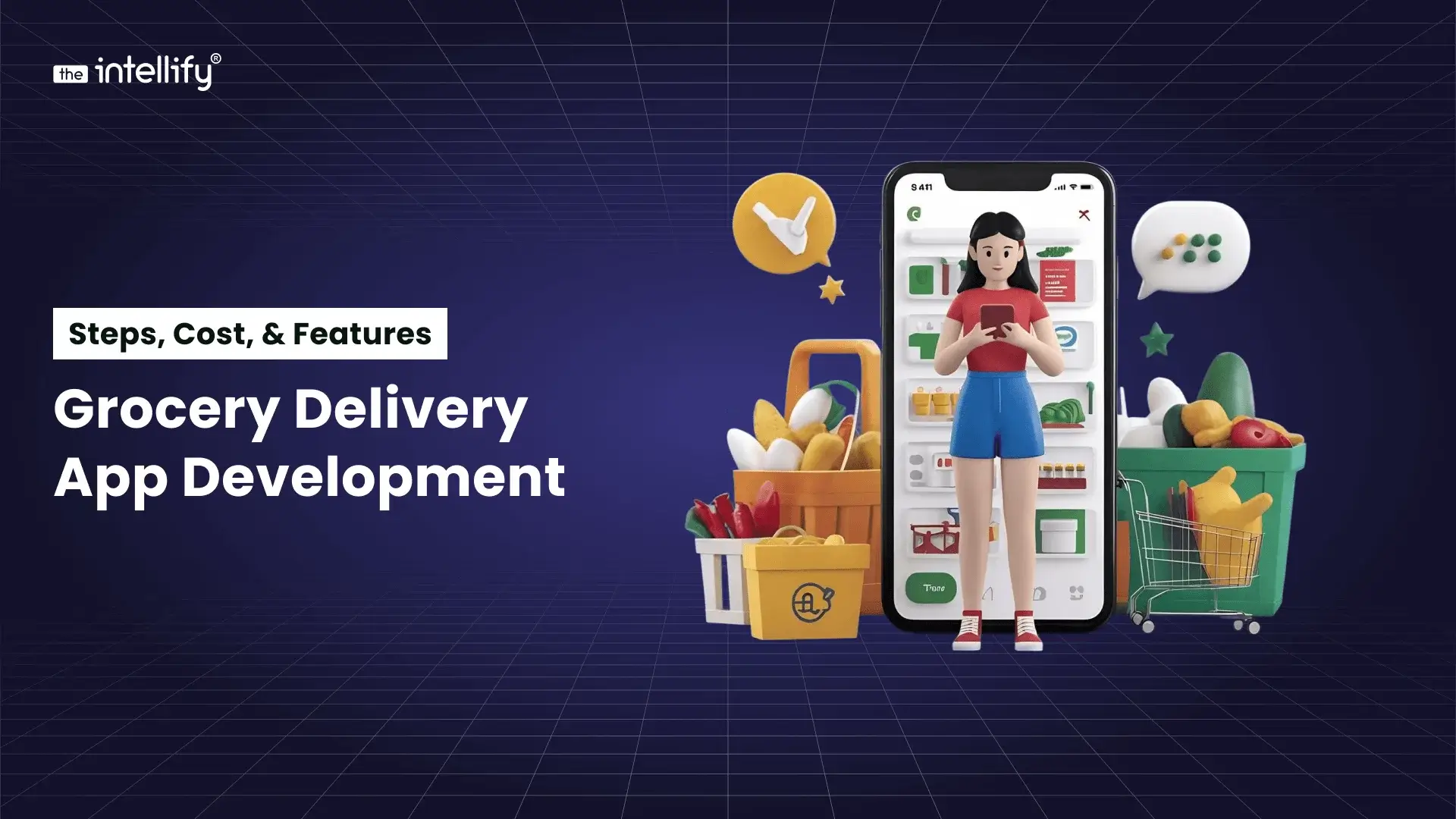

Grocery Delivery App Development: Cost, Features, & Tech Guide
Summary: In this blog, we explore how to build an on-demand grocery delivery app development in 2026, from key features and tech stack to cost estimates, business models, and scaling strategies. Whether you’re a startup or established retailer, you’ll get a clear roadmap to launch and grow a grocery-delivery platform that wins in today’s competitive […]


How to Build a High-Performance Sports Streaming App
Summary: This blog provides a clear overview of how to build a sports streaming app, including essential features, advanced capabilities, tech architecture, cost breakdowns, and the full development roadmap. It also covers monetization options, performance challenges, and what makes a streaming experience successful. If you’re exploring sports streaming app development, this guide helps you understand […]


How to Build a Quick Commerce App? Benefits, Process & Cost Guide
Summary: This blog explains how quick commerce works and why it’s becoming the preferred way to deliver essentials within minutes. It covers dark stores, business models, benefits, AI’s role, and a complete step-by-step guide to building a Q-commerce app. You’ll also find cost insights, key challenges, and future trends to help you plan, launch, or […]


Grocery Delivery App Development: Cost, Features, & Tech Guide
Summary: In this blog, we explore how to build an on-demand grocery delivery app development in 2026, from key features and tech stack to cost estimates, business models, and scaling strategies. Whether you’re a startup or established retailer, you’ll get a clear roadmap to launch and grow a grocery-delivery platform that wins in today’s competitive […]
0
+0
+0
+0
+Committed Delivery Leads To Client Satisfaction
Client Testimonials that keep our expert's spirits highly motivated to deliver extraordinary solutions.


